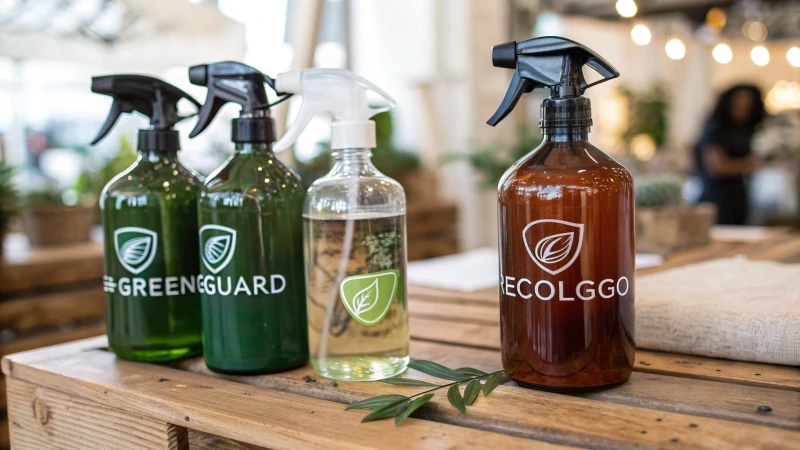
Have you ever wondered what makes a sprayer bottle truly eco-friendly?
Environmental certifications for sprayer bottle materials, like GREENGUARD and ECOLOGO, ensure products meet standards for low emissions and minimal environmental impact. These labels guide manufacturers toward eco-friendly practices, helping them connect with green-minded consumers.
Navigating through these certifications can be quite the adventure. I remember the first time I had to decide on materials for a project. The choices were overwhelming, but these certifications offered a clear path to sustainability. Let me share insights on key certifications that can help you choose the right materials, benefiting both your brand and our planet.
GREENGUARD certification ensures low chemical emissions.Vero
GREENGUARD certifies products for low chemical emissions, promoting healthier indoor air quality.
ECOLOGO certification is unrelated to environmental impact.Falso
ECOLOGO certifies products for reduced environmental impact, aligning with eco-friendly standards.
What Are the Key Environmental Certifications for Sprayer Bottles?
Navigating the world of environmental certifications for sprayer bottles might seem daunting, but it’s a vital step towards sustainable practices and informed consumer choices.
Key environmental certifications for sprayer bottles are EcoLabel, Cradle to Cradle, and Green Seal. These certifications assure that products are eco-friendly, recyclable, and made using sustainable practices, helping consumers make informed and responsible choices.
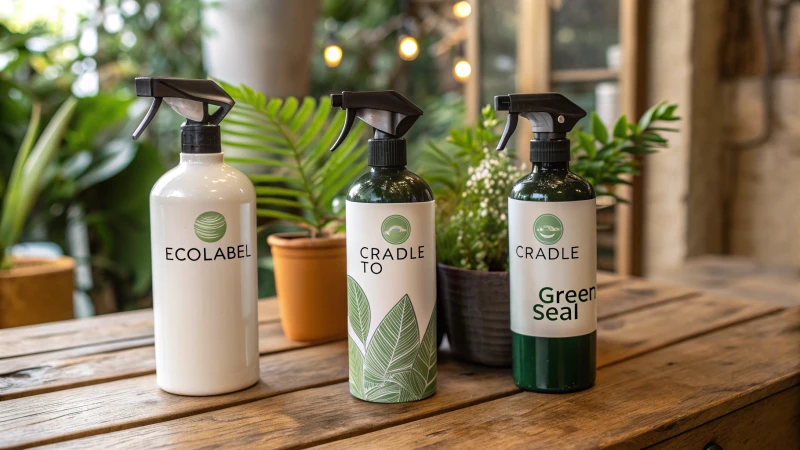
EcoLabel Certification
I remember the first time I came across an EcoLabel sticker while shopping—it felt like finding a secret badge of honor on the product. EcoLabel certification is like that; it guarantees that sprayer bottles meet strict environmental standards, covering everything from energy consumption to how the product can be disposed of at the end of its life. When I see that label, I know I’m choosing something that’s not just good for me but also for the planet.
| Criteria | Description |
|---|---|
| Energy Use | Evaluates energy efficiency in production processes. |
| Material Sourcing | Requires responsible sourcing of raw materials. |
| End-of-Life | Encourages recyclability or biodegradability of the product. |
Cradle to Cradle Certification
The concept of "Cradle to Cradle" caught my attention as I was always keen on reducing waste in my business operations. This certification is like a gold star for sustainability, ensuring that every part of a product’s lifecycle is accounted for—from material health to social fairness. With sprayer bottles, this means they’re designed to be part of a continuous cycle rather than a one-time use product.
- Material Health: Ensures materials used are safe for humans and the environment.
- Recyclability: Evaluates whether materials can be reused effectively.
C2C certification pushes companies (and us consumers) to constantly improve our environmental footprint, encouraging innovative designs and sustainable production methods.
Green Seal Certification
I’ve always been a stickler for checking product labels, and Green Seal is one I trust implicitly. This certification ensures that sprayer bottles meet high environmental standards, focusing on factors like toxicity and packaging. Knowing a product has a Green Seal means it’s not only effective but also aligns with my eco-conscious values.
- Toxicity: Ensures non-toxic materials are used.
- Packaging: Promotes minimalistic and recyclable packaging options.
Importance of Certifications in Consumer Choice
When I choose products with these certifications, I’m not just making a purchase—I’m making a statement about the kind of world I want to live in. Products with certifications like EcoLabel, C2C, and Green Seal often stand out in the market because they represent a commitment to sustainability that many consumers, including myself, deeply value.
Understanding these certifications empowers me to make smarter choices and encourages businesses to adopt sustainable practices, ultimately fostering a more environmentally responsible industry. It’s about more than just buying; it’s about investing in a sustainable future.
For further insights into how EcoLabel certification1 impacts the market, you might want to explore its criteria and application process. This knowledge equips us with the information needed to adapt to eco-friendly trends effectively.
EcoLabel certification ensures energy-efficient production.Vero
EcoLabel evaluates energy efficiency as part of its criteria.
Green Seal certification ignores product toxicity.Falso
Green Seal specifically evaluates the toxicity of materials used.
How Do Certifications Like GREENGUARD and ECOLOGO Work?
Ever wondered how those eco-friendly labels on products like GREENGUARD and ECOLOGO actually work? They’re more than just stamps of approval!
GREENGUARD and ECOLOGO certifications ensure products meet high environmental and health standards through rigorous testing for low chemical emissions and sustainable practices, promoting healthier indoor environments and reduced ecological impact.
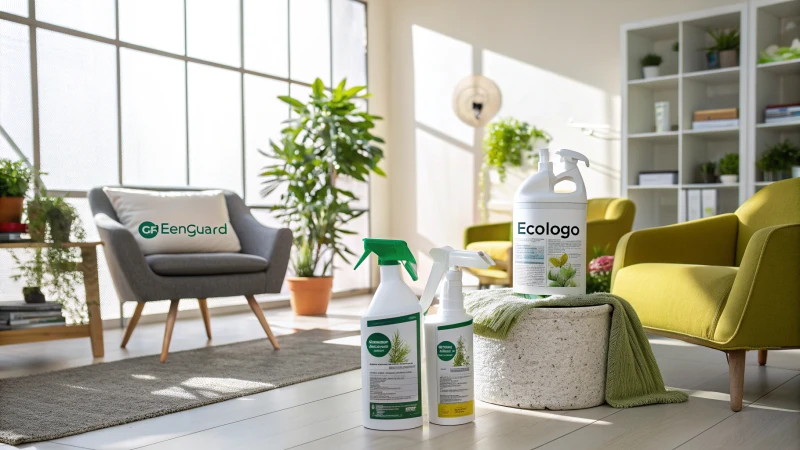
Understanding Certification Criteria
I remember the first time I dove into the world of product certifications. It was like deciphering a secret code! Both GREENGUARD and ECOLOGO certifications are like gold stars for products. GREENGUARD primarily focuses on ensuring that products have low chemical emissions, which is crucial for maintaining good indoor air quality. It’s like having a personal air purifier badge for your products. On the other hand, ECOLOGO takes a broader approach, evaluating the entire lifecycle of a product—from the moment resources are extracted to when it’s finally disposed of. This means considering everything from resource use to the overall ecological footprint, kind of like conducting an environmental health check-up for the product.
The Testing Process
I once visited a lab where GREENGUARD testing took place—it felt like stepping into a sci-fi movie! Products are placed in controlled environments to measure volatile organic compounds (VOCs). This is especially vital for places like schools and hospitals, where air quality can directly impact health.
ECOLOGO, on the other hand, evaluates everything from energy use to water consumption in a product’s lifecycle. It’s like having a sustainability detective on the case, ensuring each product meets specific thresholds to qualify for certification.
| Certification | Focus Area | Primary Benefit |
|---|---|---|
| GREENGUARD | Indoor air quality | Ensures low chemical emissions |
| ECOLOGO | Lifecycle environmental impact | Promotes sustainable manufacturing |
Benefits of Certification
Having GREENGUARD or ECOLOGO certification can make a product stand out like a star at a talent show. These certifications provide assurance of sustainability2 and safety, which are often deciding factors for consumers. From my experience, businesses that achieve these certifications often notice increased credibility and trust in their brand. It’s like wearing a badge of honor that says, “We care about you and the planet.”
Real-World Implications
For manufacturers, gaining these certifications is more than just checking a box; it requires a serious commitment to sustainable practices3. I’ve seen companies invest in greener technologies and revamp their supply chains to reduce emissions and waste. On the consumer end, choosing certified products can contribute to healthier living spaces and a smaller ecological footprint. Understanding these certifications helps us all make smarter choices that align with sustainability goals and regulatory compliance. As the standards evolve, they reflect our growing awareness and commitment to environmental responsibility.
GREENGUARD focuses on indoor air quality.Vero
GREENGUARD certification verifies low chemical emissions for indoor spaces.
ECOLOGO evaluates only chemical emissions.Falso
ECOLOGO assesses lifecycle environmental impact, not just emissions.
Why Are Environmental Certifications Important for Your Brand?
Ever felt like your brand needs a boost in credibility and trust? Well, environmental certifications might just be your secret weapon!
Environmental certifications are vital for my brand because they showcase a real commitment to sustainability, improve my brand’s reputation, increase consumer trust, and can even lead to cost savings through more efficient processes.
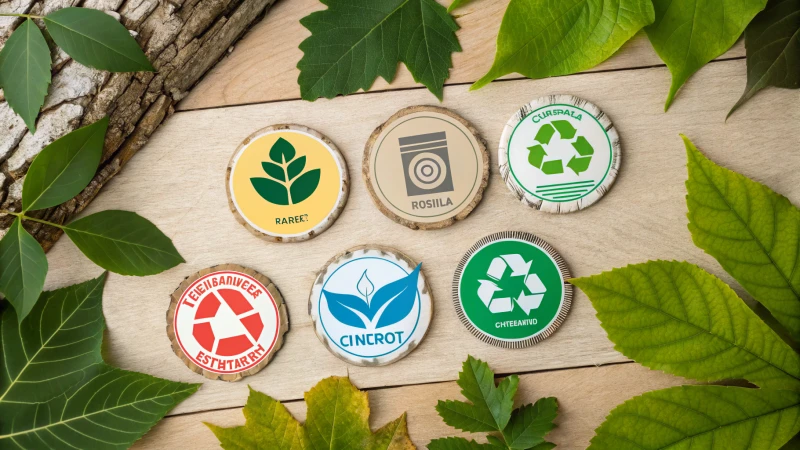
Enhancing Brand Reputation
I remember the first time I considered adding environmental certifications to my brand strategy. It was like opening a door to a whole new world of possibilities. These certifications aren’t just stickers or labels; they symbolize a genuine commitment to sustainability. And when I see consumers, especially those who are eco-conscious4, gravitating towards brands that genuinely care about the planet, I realize how much it elevates my brand’s status. It’s like having a conversation with someone who truly gets it—who values and prioritizes the same things I do.
Boosting Consumer Trust
In a market saturated with "greenwashing" claims, authenticity is king. Certifications are like a trusted friend vouching for you. They serve as third-party endorsements of my sustainable practices, which builds trust with consumers who are naturally skeptical. It’s reassuring to know that when people choose my products, they have peace of mind knowing they’re making eco-friendly choices5 backed by credible claims.
| Certification | Benefits |
|---|---|
| LEED | Recognized globally for promoting energy-efficient buildings. |
| Energy Star | Assures customers of energy-efficient products. |
| Fair Trade | Guarantees ethical sourcing and production standards. |
Driving Business Growth
I’ve seen firsthand how adopting environmental certifications can set my brand apart in a crowded market. It’s like finding that unique outfit in a sea of sameness at a store—it catches your eye, and you just have to have it. This differentiation often leads to increased sales because customers want to buy from brands that align with their values. I recall reading about a study6 showing that products with eco-labels saw up to a 20% increase in sales—a testament to the power of these certifications.
Cost Savings and Efficiency
While obtaining certifications might seem costly initially, it often leads to operational efficiencies. I remember being hesitant about the upfront investment, but then I saw how reducing waste and improving resource management not only supported the environment but also cut costs in the long run. It was like discovering a win-win situation where both my conscience and wallet were happy.
Aligning with Regulatory Standards
Many industries are shifting toward stricter environmental regulations, and I’ve realized that by obtaining certifications, my brand stays ahead of these regulations. It’s about being proactive rather than reactive—positioning my brand as a leader in sustainability and potentially avoiding fines while improving market positioning.
Attracting Investment and Partnerships
Investors today are increasingly considering environmental factors when making decisions. I’ve found that having clear sustainability credentials, supported by certifications, makes it easier for my brand to attract investment and form strategic partnerships with like-minded companies7. It’s like being part of an exclusive club where everyone shares the same values and goals.
Environmental certifications enhance brand reputation.Vero
Certifications show commitment to sustainability, boosting brand image.
Eco-labels decrease product sales by 20%.Falso
Eco-labels can increase sales by up to 20%, not decrease them.
How do I choose certified sprayer bottle materials for my products?
Ever stared at an array of sprayer bottles, wondering which material is right for your product?
Choosing the right sprayer bottle material means balancing product formulation, brand image, and target market. PET is lightweight and clear, PP offers chemical resistance, while glass adds premium appeal and sustainability.
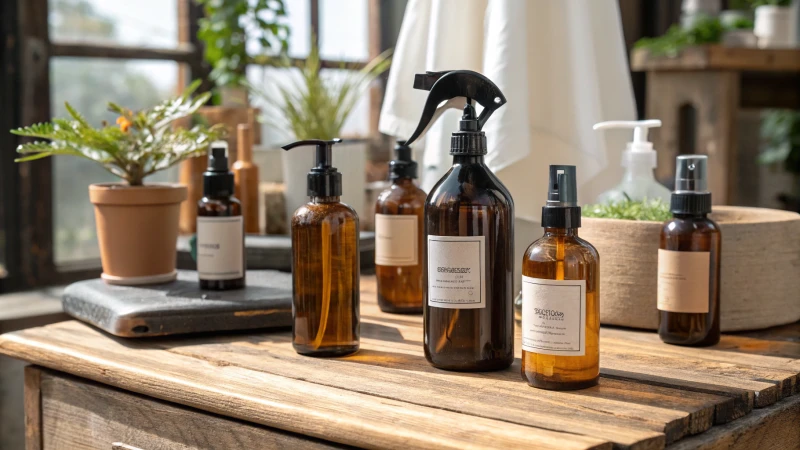
Understanding Material Options
I remember standing in my office, surrounded by samples of sprayer bottles, each promising to be the perfect fit for my skincare line. The choice wasn’t just about picking a material; it was about aligning each option with what my brand stands for and what my customers expect.
- PET (Polyethylene Terephthalate): This material caught my attention for its lightweight and shatter-resistant qualities, perfect for products needing transparency and durability. It felt right for facial mists8 or serums where clarity could enhance the product’s appeal. However, I had to consider its limited chemical resistance when deciding if it would work with all formulations.
- PP (Polypropylene): PP was another contender due to its chemical resistance and cost-effectiveness. Ideal for products with active ingredients, it didn’t offer the same transparency as other materials, which was a bit of a trade-off.
- Glass: There’s something undeniably luxurious about glass. Its premium look aligned perfectly with my brand’s high-end positioning. Despite the challenges in shipping due to its weight and fragility, glass stood out for its eco-friendly credentials.
| Material | Advantages | Limitations |
|---|---|---|
| PET | Lightweight, Clear | Limited Chemical Resistance |
| PP | Chemical Resistant | Less Transparent |
| Glass | Premium Look, Sustainable | Heavy, Fragile |
Aligning Material Choice with Product Needs
Choosing the right material also involved considering factors like product formulation. For instance, I learned that PET might not be suitable for highly acidic or oily products. PP‘s chemical durability9 made it a safer bet for aggressive ingredients like high-concentration Vitamin C.
Brand positioning also played a crucial role. Glass bottles conveyed the premium feel I wanted my customers to associate with my products. On the other hand, PET offered a more cost-effective solution without sacrificing too much on the aesthetic front.
Understanding my target market’s preferences was key. Eco-conscious consumers, for example, were more inclined towards recyclable materials like glass or PCR plastics. This meant engaging with suppliers to ensure that these materials met both sustainability trends and certification requirements.
By thoughtfully weighing these factors, I could ensure that my choice of sprayer bottle material not only complemented my products but also enhanced my brand’s reputation and met consumer expectations.
PET is ideal for high-acid formulations.Falso
PET has limited chemical resistance, unsuitable for high-acid products.
Glass bottles offer a premium look and eco-friendliness.Vero
Glass provides luxury appeal and is sustainable, enhancing brand perception.
Conclusione
Environmental certifications like GREENGUARD, ECOLOGO, EcoLabel, Cradle to Cradle, and Green Seal guide eco-friendly sprayer bottle choices, ensuring low emissions and sustainable practices for informed consumer decisions.
-
This link offers understanding on how EcoLabel influences purchasing decisions by highlighting eco-friendly product attributes. ↩
-
Learn the significance of sustainability in enhancing product certifications like GREENGUARD and ECOLOGO. ↩
-
Explore effective sustainable practices manufacturers adopt to meet GREENGUARD standards. ↩
-
Understand how consumer preferences for sustainable products influence market trends. ↩
-
Learn how third-party certifications validate a brand’s sustainability claims. ↩
-
Explore research on how eco-labels can boost product sales. ↩
-
Discover how sustainability partnerships can enhance brand value. ↩
-
Discover how PET bottles enhance the appeal of facial mists through their clarity and lightweight features. ↩
-
Explore why PP’s chemical resistance makes it an ideal choice for products with aggressive formulations. ↩



